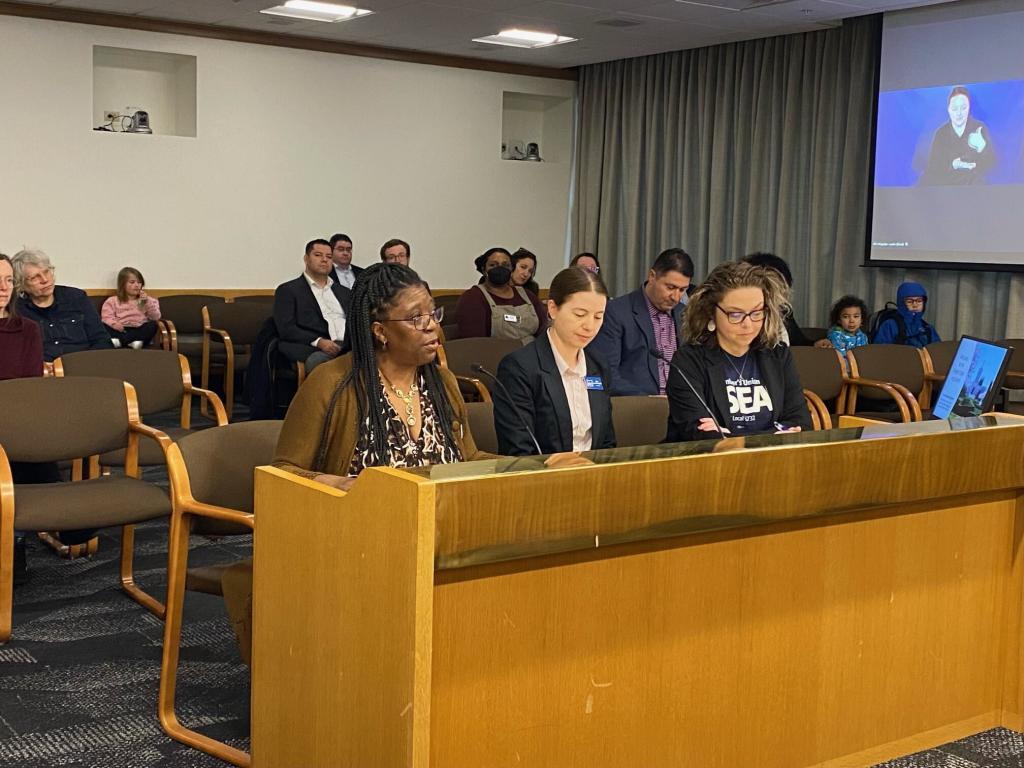
Bill shapes are starting to emerge from the muck of the 2023 legislative session.
A procedural deadline on Tuesday, April 4, is separating the possible from the doomed. A flurry of bills rocketed through committees last week while others quietly faded away.
At the same time, the legislative budget plan released March 23 is putting everything in perspective. The co-chairs of the Joint Ways and Means Committee, which holds the state’s debit card, have said what they are willing to pay for.
For education advocates, the plan’s most important number is the $9.9 billion for the State School Fund. It’s more than state agencies proposed in December but still far below the $10.3 billion school officials say is needed to avoid cuts at most districts.
Other framework details are potentially instructive. Framework notes indicate that the entire corporate kicker, about $1.5 billion, will be used to get to $9.9 billion. Using this one-time money for the State School Fund likely means that many of the other ambitious projects education advocates had pushed for, including investments in workforce, infrastructure, and extended learning opportunities, are now much less likely.
The framework also demonstrates the demand for services as we head into what looks to be a tough budget cycle. The co-chairs have left only about $325 million set aside for more than $2 billion in spending proposals across state government.
And, of course, the budget framework is not specific. It is a frame, but much of the work still has to be done and will likely come after the May 17 revenue forecast.
Legislative Highlights is offering a weekly look at what goes into creating the State School Fund, “Funding Oregon’s Future.” Education advocates also need to know what is getting stacked onto and taken out of the State School Fund.
As of April 4, bills are essentially dead if they have not moved out of a policy committee or been sent to the exempt revenue, rules and joint committees. Here are some bills that are still alive that could affect school spending.
In no particular order, some of the notable bills include:
- HB 3198: this bill is one of Gov. Tina Kotek’s two major initiatives, on early literacy. The most recent set of amendments represent a total revision of the base bill, and includes the core policy pillars of investments in coaching and high-dosage tutoring; extended learning programs including summer programs; and an emphasis on “science of reading” curriculum. OSBA is advocating for sufficient funding for smaller districts in the bill. Unknowns remain, however, including the size of the total funding and the actual way the formula would work. The bill will likely move today from the House Education Committee to the Joint Committee on Ways and Means, where funding will be decided.
- SB 1045: The second of Gov. Kotek’s education bills, HB 1045 would upend Oregon’s K-12 public education system entirely. It would centralize almost all oversight, give the state board control and management over local districts, and be incredibly prescriptive. At a previous public hearing, OSBA testified in opposition to the bill, joined by the Coalition of Oregon School Administrators. Concerns about the bill seem to have registered with the governor’s office, and it is likely that the bill will move to the Senate Rules Committee, where feedback from OSBA and other stakeholders can continue to shape the bill without running into procedural deadlines.
- HB 2739: This bill, championed by House Education Committee chair Rep. Courtney Neron (D- Wilsonville), would allow a group of education stakeholder representatives, including OSBA, to participate in a committee to discuss funding calculation methods before a long session. While the topic is a little “in the weeds” and dry, it is a potential first step toward accurately calculating the K-12 system’s actual recurring costs. The bill’s future is unclear, and it may move out of committee later today, April 3. If it advances, it would move to the Joint Committee on Ways and Means.
- SB 290: This bill, which testimony indicates was intended to codify existing responsibilities of school districts and clarify statute, would potentially have had profound governance effects. It would have shifted the “management and control” of public schools to the State Board of Education, a radical departure. This bill was not posted for a work session, and is procedurally “dead” for the session.
The Joint Way and Means Committee will be holding budget-focused public hearings in Portland, Newport, Roseburg and Ontario, starting Saturday April 8. Currently, the listed dates are:
Saturday, April 8 (10:00 a.m.-12:00 p.m.)
Location: Portland Community College – PAC Auditorium, Sylvania Campus
12000 SW 49th Ave., Portland
Friday, April 14 (5:00 p.m.- 7:00 p.m.)
Location: Newport Performing Arts Center
777 W Olive St., Newport
Friday, April 21 (5:00 p.m.-7:00 p.m.)
Location: Umpqua Community College
1140 Umpqua College Rd.
Friday, April 28 (5:00 p.m- 7:00 p.m.)
Location: Four Rivers Cultural Center
676 SW 5th Ave., Ontario
(Note: Ontario is in the Mountain Time Zone)
OSBA Board President Sonja McKenzie offered powerful testimony last Monday before the Ways and Means Education Subcommittee. Flanked at the witness table by association presidents for OEA and OSEA, McKenzie told the assembled legislators of the need for adequate education funding. “At a time of record state revenues, and with ample reserve funds available,” McKenzie said, “our students need you to invest in their future. They need your leadership, and we are relying on you not to let them down.”
Now is the time for school board members to get involved. Public legislative hearings hold real weight when school leaders give the classroom perspective. Contact your OSBA Legislative Policy Committee representative for more information on how to have your voice heard.
-Richard Donovan
Legislative Services specialist